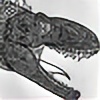HOME | DD
 TheRopen — Widespread Marine Fish Species of Carnes
TheRopen — Widespread Marine Fish Species of Carnes

#carnes #speculativefiction #worldbuilding #speculativeevolution #speculativebiology #speculativezoology #speculativeecology
Published: 2022-02-16 16:20:47 +0000 UTC; Views: 13305; Favourites: 131; Downloads: 12
Redirect to original
Description
Let me know which of these are your favorite ^^.-----------------------------------------------------------------------------------------------------------------
Band-Tailed Tuna (Thunnus ravdocaudis)
A Tuna descended from ancestors coming through portals on either (Continent 5) or (Island 3). Spanning 2m (6.6ft) in length, they have partial-body endothermy no different to Tunas on Earth, enabling them to widen their range across Carnes. Adults and juveniles live in different environments, with the former being pelagic and frequenting the surface and depths of 200-500m, and the latter inhabiting inshore environments such as bays, lagoons, reefs, and seagrass meadows. Their diet is also differentiated as juveniles hunt for crustaceans and cephalopods and adults prey on smaller fish, though both hunt during the day in schools. Juveniles may also follow larger foraging fish and pounce on rushed out prey. With a lifespan of 15-26 years, they reach sexual maturity at around 5 years of age and are capable of reproducing up to 8 times per year, spawning from July to December during the third or fourth lunar phases. Mating occurs at night to reduce predation on their eggs, with females produce 5 million to 25 million.
Starry Noser (Rhinopichthys asterodermis)
A 1.5m (5ft) surface-dwelling Plethodid descended from ancestors coming through portals on (Continent 3). Capable of speeds up to around 58 mph, they are fast pursuit predators that hunt other fish, crabs, and squid in temperate, tropical, and subtropical waters all over Carnes, though they also feed on zooplankton. They are also among the fastest-growing fish with a lifespan of only 5 years, reaching sexual maturity after about 4-5 months. Females may spawn 3 times per year mostly during spring or autumn in waters 28 °C, producing 80 thousand to 1 million eggs each time. Despite mainly being pelagic, their schools would often wonder closer to shores during the summer months.
Blue Kingfish (Rachycentron caerulus)
A 1m (3ft) descendant of Cobias (Rachycentron canadum) that came through portals on (Continent 5) and primarily preys on crabs, squid, and fish, sometimes following larger animals to scavenge. Swimming in schools of same-sized individuals, they are much more social than their ancestors and will only break into smaller shoals when feeding. Though they can tolerate a wide range of temperatures, they are more often found in warm-temperate, tropical, and subtropical waters throughout Carnes, typically swimming closer to the surface and congregating at reefs, estuaries, and mangroves despite mainly being pelagic. Adults have a lifespan of 17 years and reach sexual maturity at 2 years, during which their colors and stripes bolden. They spawn during the spring and summer months within 48-130km of a coast, with females capable of spawning 30 times within a single season and producing up to 450 thousand eggs. Each egg floats freely with the current and within 15-25m of the surface, their hatching time depending on the surrounding temperature. As such, most eggs are laid in waters 9–12 °C to ensure they hatch within a week. Incapable of swimming until 40 days, both egg and larvae become part to the surrounding plankton.
Black Cod (Platylepigadus niger)
A 70-80cm benthopelagic Gadid descended from ancestors living in the Yellow Sea on Earth that were transported through portals (Continent 5), currently living in the seas between (Continent 1) and (Island 2). To preserve energy and maintain homeostasis, they prefer shallower warmer water at night and colder deeper water during the day, during which their swimming speed also increases as they actively search for food. Their diet depends on body size in which smaller fish prey on crustaceans and large fish feed on other smaller fish, sometimes cannibalizing younger members. They are a shoaling species that move in large groups structured by body size, with larger fish acting as scouts and leaders of the shoal. Changes in shoal structure occur in the presence of food as they feed during migration, the larger scouts consuming more variable and quantitive food than trailing fish. Their environment preference depends on predation risks in which a lack of predators or the presence of passive predators enables them to seek finer-grained beds of sand and gravel-pebble, while active predators force a need to seek safety in cobble or kelp. Having a lifespan of 25 years, young fish reach sexual maturity at around 4-8 years and reproduce annually during a 1-2 month spawning season, forming spawning groups during February or April. During this time, males become darker in color and exhibit aggressive behavior towards each other as they establish dominance hierarchies, females choosing their spawning partner based on status and physical characteristics. Males may also engage in varied mating strategies like courtship, but in any case larger fish are more successful and produce the largest proportion of offspring. Once a mate is chosen, the female will excavate a depression with her tail before she and the male will leave their eggs and milt inside. Females could yield up to 500 thousand eggs which will rift with ocean currents before hatching.
Manticore Rockfish (Sebastes rufispinus):
A 1m (3ft) giant Rockfish descended from ancestors transported through portals on (Continent 5). Like all Rockfish, their dorsal fins are supported by venomous spines that could inject cardiotoxins, affecting the heart with dangerous fluctuations of blood pressure and electric systems. Aside from severe chest pain traveling to the shoulders and neck, other side effects include nausea, faintness, and throbbing pain and cyanosis in the sting wound. The severity of their venom depends on dosage and ones sensitivity, resulting in either death or major discomfort that wears off in two weeks, less if one were to soak themselves in hot water. Also like other rockfish, their venom is purely defensive as they are perfectly capable of hunting fish, cephalopods, and crustaceans, with crabs making up the bulk of their diet. They are typically found at depths of 1-100m in rocky reefs, coral reefs, and caves along (Continents 4 and 5) and (Island 3), with juveniles being found in mangrove environments acting as nursery habitats. Living as long as 114-120 years, They are mainly solitary and only come together for courting during spawning season, generally involving 150 individuals in which one male courts several females. Typically performed at night, courtship behaviors include circling, sidewinding, following, and leading. Afterwards, a female will produce a 25cm elastic balloon-like mass containing 30 thousand eggs that the male then fertilizes, the mass then floating to the surface and taken to mangroves via water currents.
Sunset Angelfish (Neocentropyge lamprus):
A 20-30cm Angelfish descended from Pygmy Angelfish (Centropyge argi) living around Japan before being transported through portals on (Continent 5). These omnivores feed on algae, sponges, tunicates, and benthic invertebrates, and as such are found in coral and algae-rich reefs and lagoons spanning from (Continents 4 and 5) and (Island 2 and 3) at depths of 7-70m, as well as (Continent 1) and (Island Chain 1). They can be found solitary or in mated pairs with females capable of changing into males within 20-39 days. Juveniles usually shelter in cracks and crevices.
Butterfly Angelfish (Xenochaetodon robustus):
A 30cm Angelfish descended from Orangeface Angelfish (Chaetodontoplus chrysocephalus) also living around Japan before coming through portals on (Continent 5). These are also omnivores, mainly feeding on nudibranchs, sponges, tunicates, coral polyps, small invertebrates, and algae, but may also clean ectoparasites off larger animals. Their range extends between (Continents 2 and 5) in areas rich in coral such as clear lagoon, channel, and seaward reefs at depths of 1-100m, hiding underneath ledges and caves during the day before coming out at night. Juveniles are found more frequently in sheltered areas.
Giant Scabbardfish (Gigaphanopus leiodermis):
A 2m (6.6ft) giant Cutlassfish descended from Intermediate Scabbardfish (Aphanopus intermedius) living in the eastern Atlantic on Earth before coming through portals on (Continent 4). Their pointed snouts and elongate bodies make them fast predators, and large eyes and dark iridescent skin enables them to pursue unseen fish, crustaceans, and cephalopods in low light conditions. As such they are nocturnal bathypelagic hunters living in depths ranging 300-1350m, swimming up the water column at night to hunt at middle depths. They live in moderately warm and tropical waters and perform a clockwise migration between (Continents 2 and 5), with spawning occurring from October to December. As total spawners, they group together in large concentrations and release all their eggs and milt in one single event per breeding season. Females could spawn for 8 years out their 14 year lifespan and are capable of producing up to 30 million eggs each time. Unlike adults, juveniles are mesopelagic and live in depths of 100-500m, and grow slowly thanks to their investment in growth and reproduction.
Related content
Comments: 8

👍: 1 ⏩: 0

👍: 2 ⏩: 0

👍: 1 ⏩: 1

👍: 1 ⏩: 0

👍: 2 ⏩: 0

👍: 2 ⏩: 1

👍: 1 ⏩: 0

👍: 2 ⏩: 0

















